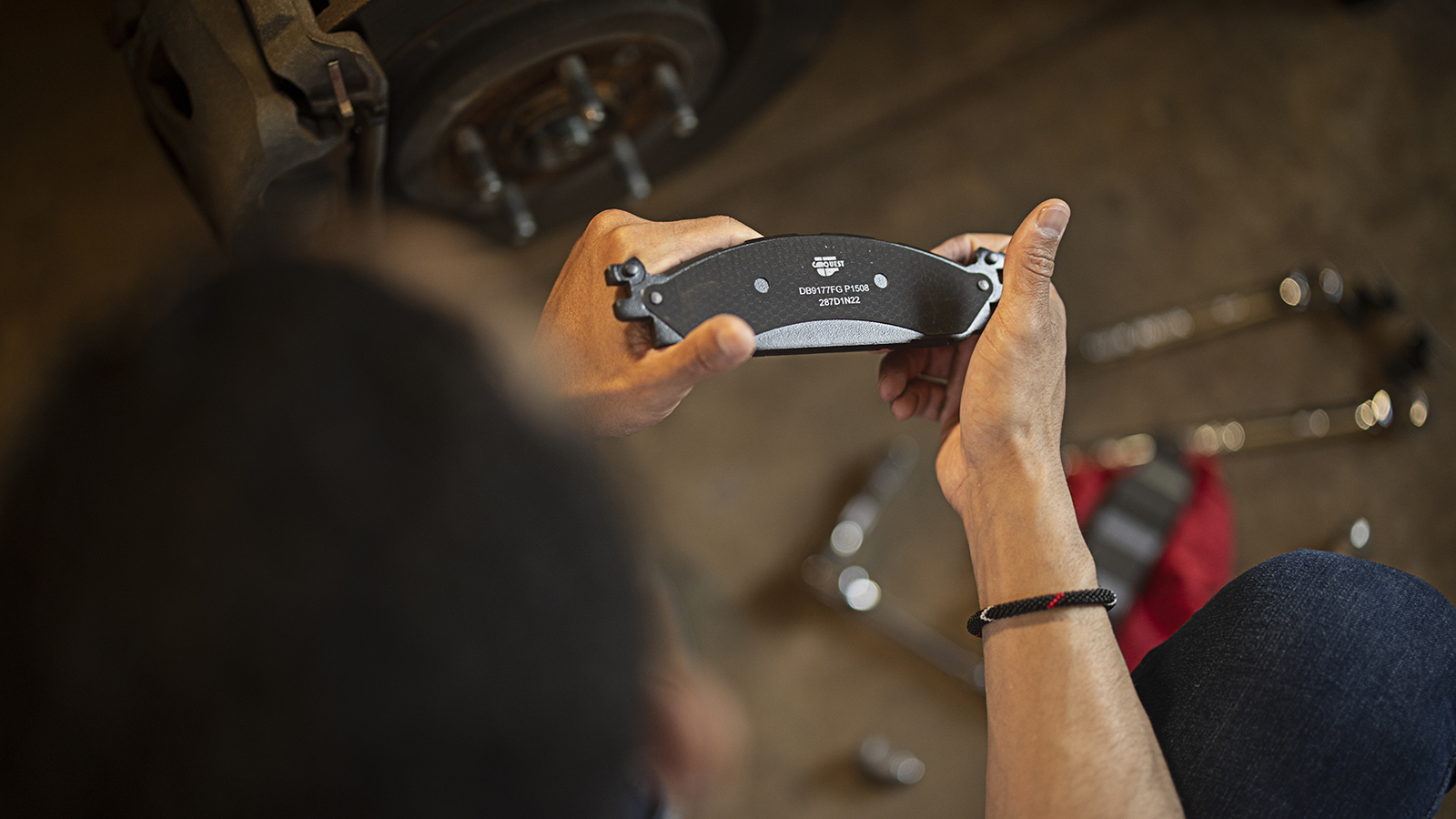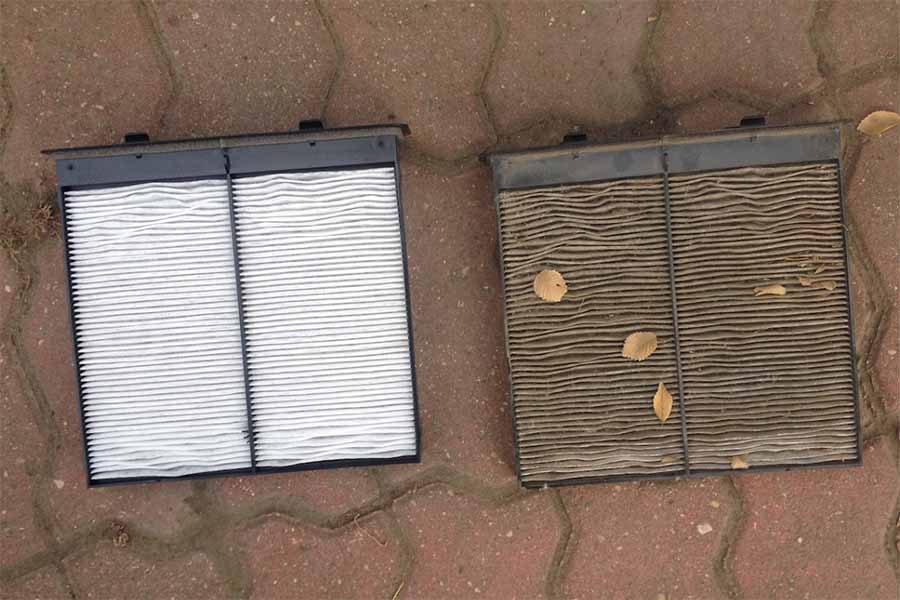Do you lose track of your keys at least once a week? You wouldn't be alone, the Wall Street Journal suggests that the average adult misplaces at least nine items every day.
If you want to beat this common time waster, then maybe it's time to invest in a key fob hanger. Building one is easier than you may think and could be a great way to spend some quality time with the kiddos this Summer.
Here's how to build a functional piece of automobile art that helps keep you and the family's schedule on track.
A New Classic V8 Valve Cover
A new valve cover is safer for little ones, as you won't have to deal with harsh cleaners or gross residue getting everywhere. While this version shows the painted product out of the box, you can prime and paint a new valve cover and let your kid's creativity shine through.
Items Needed:
- Valve cover
- Valve cover gasket
- Oil breather cap
- Primer
- Spray paint
- Wall hooks, bolts, nuts and other hardware
- Tape measure
- Grease pencil
- Drill and bits

Source | Andy Jensen
Here we see Edelbrock Signature Series Valve Covers for a Small Block Chevy from 1959 to 1986. Chevy fans know the SBC ran earlier and longer than those years, but the earlier valve covers had a staggered bolt pattern, while the late '80s delivered center bolts. The perimeter bolt holes on this valve cover double as easy pre-made hangers to mount on the wall, but a valve cover gasket is recommended to prevent potential damage to a painted wall.
Follow these DIY steps:
- Decide how many keys you need to hang, as that determines how many holes you drill. To simplify this project, we will hang four sets of keys on four evenly-spaced hooks.
- Now let's divide each segment of the valve cover for even hanger spacing. The valve cover measures approximately 19 inches long, with three design segments thanks to the perimeter bolt holes. The smaller segments on the end measure almost 5 inches each, while the center is 9 inches. Finding the center of each side piece means dividing it in half and placing the hook 2.5 inches in. Similarly, the split center section takes one hook at 4.5 inches. Since we want three in the center, measure three inches in for the first mark, three more inches for the next one, and measure the last three inches to ensure it is even. Since the valve cover is 2.5 inches tall, measure 1.25 inches for proper hook placement.
- Use a grease pencil, dry-erase marker, or other temporary means to mark the placement of where to drill the hook holes. Where the horizontal measurement lines cross the 1.25-inch depth line (previous step) is where to drill.
 Source | Andy Jensen
Source | Andy Jensen - The #8 machine screws measure 5/32, so you need to make a hole that size. Start with a 1/16-inch bit to drill the guide hole, then swap out for the larger drill bit to widen the hole. Use a drill bit designed for working with metal and steel, such as cobalt or titanium, and carefully drill through the valve cover at each market hole.
- Once all the holes are in place, remove the wall hooks from their package and place one on the valve cover. Thread a machine screw up from the bottom, then from the back side (the inside) of the valve cover, thread the nut down onto the screw. Hand tighten first, but grab a wrench and tighten them down for years of performance.
 Source | Andy Jensen
Source | Andy Jensen - Fit the valve cover gasket seal into the grove. It will likely stay in place with just a press fit or use a small amount of glue or epoxy to keep it in place.
- The key holder is functional, but you can add accessories such as a breather, PCV valve, or oil cap, depending on your specific valve cover and desired look.
- Place the valve cover key hanger on your wall, and use a pencil to mark the location of the bolt holes. Drive nails into the wall at those marks, but leave them sticking out the last half inch. Then hang your new key holder on the nails, and snap a pic to show off your handiwork.
 Source | Andy Jensen
Source | Andy Jensen
Save Money With a Used Valve Cover
While the Edelbrock set above is affordable, buying a used valve cover is cheaper. This Honda D15 1.5L valve cover has seen some stuff, powering a Civic for 30 years before ending up with its hood up in a salvage yard. Running half the price of the above set, it is more affordable, but you need to put in some work to make it pretty. This D15 never had VTEC, but it's about to get "Keytec." Here's how to do it.

Source | Andy Jensen
Items needed:
- Valve cover from a salvage yard
- Engine degreaser
- Utility brush
- Wash bucket
- Sandpaper
- Disposable gloves
- Primer
- Paint
- Epoxy
- Keychain magnets
Used means years of reliable service, many layers of grime and pulling it yourself from a salvage yard. That's part of the adventure and definitely in the spirit of DIY. To save money, you'll need to spend some time here. Follow this process.
- Remove the valve cover from the engine. First, remove any spark plug wires, vacuum tubes and associated accessories attached to the valve cover. You will need a socket and ratchet to remove the valve cover bolts. Use a mallet and tap the valve cover on the side to break the gasket's seal, and the valve cover will be freed.
- This thing is filthy and too gross for even a garage wall. Spray it with a degreaser and use a scrub brush to remove large deposits. Soak it in a bucket of diluted degreaser overnight for easy grime removal the next day.
 Source | Andy Jensen
Source | Andy Jensen - Sand the surface to remove any leftover residue and prep the surface for paint. Use fine-grain sandpaper, and follow it with isopropyl alcohol for a paint-ready surface.
- Now comes the fun part. Follow the directions on the can of primer, and coat the entire exterior surface. If you desire, spray the inside of the valve cover too, but realize that most people won't normally be able to see in there.
 Source | Andy Jensen
Source | Andy Jensen - After letting the primer dry, spray your choice of paint on the valve cover. You can go with a logical choice, such as Ford blue on a Ford valve cover, or do something wild like neon splatter paint for an '80s vibe. Use a high-temp wrinkle coat paint for a more authentic, high-performance look. Honda and the JDM aftermarket supplied plenty of red valve covers over the years, and that's the look we're going for here.
 Source | Andy Jensen
Source | Andy Jensen - After letting the paint dry, sand the surface of the spark plug holes. This will remove the paint to expose the bare metal again. We're using epoxy here and want proper adhesion.
 Source | Andy Jensen
Source | Andy Jensen - Use the epoxy according to manufacturer directions, allowing time to cure before applying the washers. Press on the washers, then let the whole thing dry overnight.
 Source | Andy Jensen
Source | Andy Jensen - You don't need to, but a belt sander can quickly and easily remove the paint from raised surfaces, such as the Honda lettering. It adds a professional-looking touch.
- Add accessories like an oil cap as you see fit, and hang on the wall utilizing the factory bolt holes as hang points. Add a magnet to your keychain, and you can hang your key fob from the washers without fumbling for a hook.
 Source | Andy Jensen
Source | Andy Jensen
Have a cool automotive art project you've completed? Tell us about it in the comments below.







